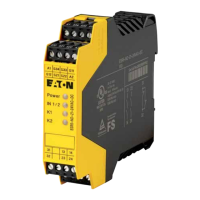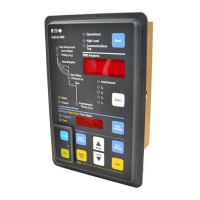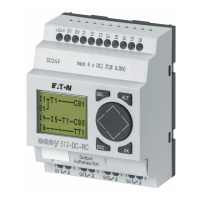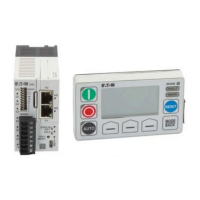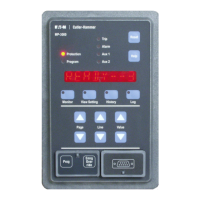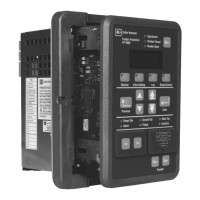I.B. 17555C
Effective November 1999
Page B9
6.3 CT SATURATION
The DSPS has been designed and extensively tested to
assure continued relay powering when the main cts satu-
rate. It powers the relay even for extreme cases in which
the ct delivers only a succession of current spikes of 1 to
2 ms each half-cycle.
But pay attention to the standard measuring limitations of
any protective relay with saturated cts.
The saturated ct is
exhibiting serious ratio error, and any connected relay will
measure lower current than is actually flowing in the pri-
mary circuit. Tripping times will be longer than planned. In
extreme cases, the relay may not trip at all.
The Digitrip 3000 is a true RMS measuring device, and
will integrate the spikes and dead periods to arrive at a
current measurement. The user should follow standard
application guidelines of comparing the ct saturation
curve with the total connected burden, in light of the max-
imum fault current. The total burden includes all con-
nected measuring device current windings, plus
resistance of the ct secondary winding itself and all inter-
connecting wiring. Since saturation curves are plotted
with RMS-measuring instruments, measurement errors
and tripping times can be predicted with good reliability.
The Digitrip 3000 with DSPS can help to reduce ct satu-
ration problems. The current-powering transformers have
been designed to present lower burden than most “self-
powered” relays, especially for large fault current magni-
tudes. The burden is much lower than that of an electro-
mechanical relay.
6.4 BURDEN DATA
In normal operating conditions, the burden is <0.08 ohms
with 3-phase 1A ct current, or 0.2 per unit, and drops to
less than 0.04 ohms at high current levels. Figures B-7
and B-8 present ct burden data in ohms and volt-
amperes. In these cases, the burden shown is the total ct
terminal value, which is the DSPS plus the relay measur-
ing circuits, for the indicated operating condition.
Figure B-7 shows burden impedance magnitude in ohms.
The two lower curves are the values with ac power
applied; the upper two are with ct powering only. For each
of these pairs, one curve shows the burden for a single-
phase current (representing a single-phase-to-ground
fault) and the other for three balanced phases with nor-
mally arrayed 120-degree phase angle increments. There
is no phase sequence sensitivity.
Figure B-8 shows the burden in volt-amperes for the
same four cases.
The three-phase burden cases assume the normal angu-
lar distribution of the phases at 120-degree intervals. If
the three-phase current inputs are connected in series to
a single current source for a lab-bench test, burden
results will be slightly different.

